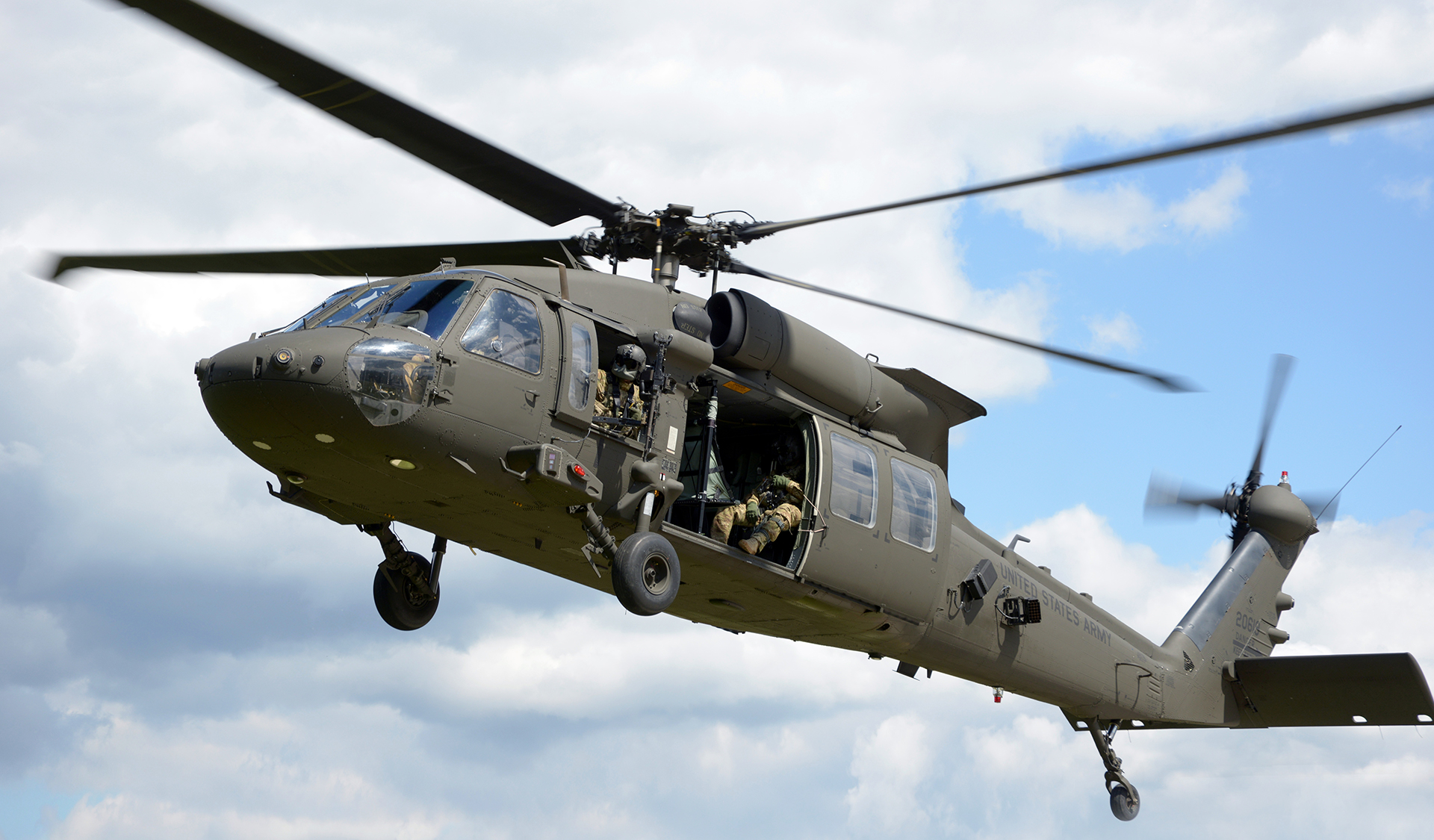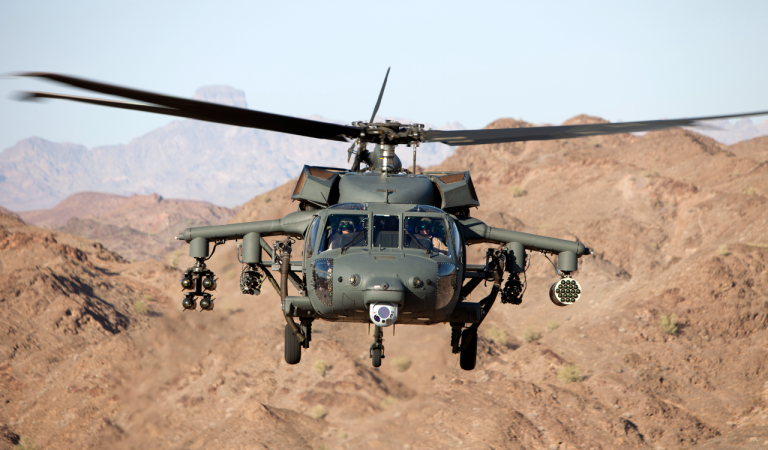The Future of the UH 60: Advancements and Upgrades for Improved Efficiency
The Future of the UH 60: Advancements and Upgrades for Improved Efficiency
Blog Article
UH-60: Developments in Modern Helicopter Layout
The UH-60 helicopter stands as a criteria in modern-day aviation, showcasing considerable advancements in style and innovation that provide to the advancing demands of army operations. Its incorporation of sophisticated products not only improves efficiency however additionally addresses critical security concerns. The combination of advanced avionics has actually transformed functional abilities, allowing for higher situational awareness and decision-making efficiency. As we discover the evolution and crucial advancements of the UH-60, it ends up being important to consider just how these growths influence not just current applications but additionally the future landscape of helicopter design.

Evolution of the UH-60
The development of the UH-60 Black Hawk helicopter represents a considerable landmark in aerospace design and military air travel. Presented in the late 1970s, the UH-60 was created by Sikorsky Airplane to satisfy the United States Military's requirement for a versatile energy helicopter with the ability of doing a variety of objectives. Its style stressed toughness, speed, and maneuverability, establishing brand-new requirements for operational efficiency.
The UH-60 features a distinct four-blade rotor system, which improves lift and stability, enabling it to run effectively in diverse environments. Its airframe is created from advanced composite materials, contributing to a reduction in weight while keeping architectural stability. The helicopter's design also integrates better the rules of aerodynamics, which enhances gas performance and boosts variety.
Over the years, the Black Hawk has actually undertaken several upgrades to enhance its capabilities, including boosted engines, advanced flight control systems, and modular systems for very easy upkeep and versatility. The helicopter's capacity to do goals varying from troop transport to medical emptying has strengthened its role as a foundation of united state armed forces operations. The UH-60 Black Hawk continues to be a prime example of how development in helicopter style can dramatically impact army effectiveness and operational flexibility.
Advanced Avionics Systems
Improvements in avionics systems have actually changed the capacities of modern-day helicopters like the UH-60 Black Hawk, improving operational effectiveness and situational awareness (UH 60). The integration of sophisticated avionics permits improved flight, interaction, and navigation administration, making the UH-60 a lot more flexible in varied objective accounts
Among the key features is the innovative electronic cabin, which uses multifunction display screens that supply real-time data, making sure pilots have prompt accessibility to crucial trip details. This streamlining of details minimizes pilot workload and improves decision-making processes throughout complicated procedures. Additionally, the unification of general practitioner and inertial navigating systems allows exact positioning and route preparation, boosting goal execution in challenging settings.
In addition, advanced avionics systems enhance communication abilities via safe and secure information web links and voice communication systems, enabling smooth coordination with ground pressures and various other airplane. The assimilation of automatic flight control systems better adds to enhanced stability and control, especially in damaging weather or during low-altitude maneuvers.
Engine and Performance Enhancements
Engine performance in modern helicopters has taken a significant jump onward, driven by innovations that enhance integrity, power, and performance. The UH-60 Black Hawk, for instance, uses the T700-GE-701C engine, which features a dual-channel, full-authority electronic engine control system.
In addition, the assimilation of engine health surveillance systems permits for real-time diagnostics and predictive maintenance, significantly boosting operational dependability. These systems not just sharp crews to possible issues prior to they end up being crucial yet also facilitate a lot more efficient maintenance scheduling, thereby decreasing downtime.

Materials and Structural Innovations
Current growths in materials and structural layout have actually Check This Out reinvented modern helicopter building, enhancing both performance and toughness. The intro of sophisticated composite products, such as carbon fiber reinforced polymers, has substantially lowered weight while keeping structural stability. This change not just boosts gas effectiveness but likewise boosts payload ability, enabling helicopters like the UH-60 to execute more diverse missions.
Additionally, technologies in light weight aluminum alloys and titanium parts have added to boosted resistance to rust and fatigue, prolonging the life expectancy of vital airframe components. The strategic use of these products has actually brought about a decrease in upkeep demands and boosted total functional preparedness.

In addition, the assimilation of computer-aided style (CAD) and my explanation additive production technologies has actually made it possible for more complex geometries and lightweight structures, optimizing the aerodynamic efficiency of helicopter styles. These developments promote rapid prototyping and production, enabling suppliers to respond swiftly to evolving objective needs.
Safety And Security and Survivability Features
Safety and survivability features in modern helicopter style have become paramount, showing the boosting needs for goal performance in tough environments. The UH-60 Black Hawk, a noteworthy instance, integrates sophisticated modern technologies to enhance staff and passenger security.
The helicopter likewise utilizes a ballistic protection system, that includes armored crew seats and important systems securing, reducing susceptability to tiny arms fire and shrapnel. Improved situational understanding is accomplished with sophisticated avionics and sensor modern technologies, permitting pilots to discover and prevent hazards properly.
In addition, the combination of redundancy in vital systems-- such as dual engines and numerous trip control channels-- makes sure ongoing procedure also if one system stops working. The UH-60 is geared up with advanced emergency situation flotation gadgets, improving survivability in water touchdowns. Jointly, these attributes not only boost the safety and security of employees yet likewise increase goal success rates in aggressive atmospheres, demonstrating the dedication to excellence in helicopter layout.
Verdict
The UH-60 helicopter represents a considerable improvement in contemporary aviation technology, integrating cutting-edge materials, innovative avionics, and durable security attributes. Overall, the UH-60 offers as a benchmark for future growths in helicopter design, personifying strength and flexibility in contemporary armed forces operations.
The UH-60 helicopter stands as a standard in contemporary air travel, showcasing considerable innovations in layout and innovation that cater to the evolving needs of armed forces operations. As we explore the advancement and key technologies of the UH-60, it comes to be essential to consider how these advancements affect not only current applications but this website also the future landscape of helicopter style.
Introduced in the late 1970s, the UH-60 was made by Sikorsky Airplane to satisfy the United States Army's requirement for a flexible utility helicopter capable of doing a range of objectives. The UH-60 Black Hawk stays a prime example of just how development in helicopter layout can significantly impact armed forces efficiency and operational adaptability.
On the whole, the UH-60 offers as a benchmark for future developments in helicopter design, personifying strength and adaptability in modern armed forces operations.
Report this page